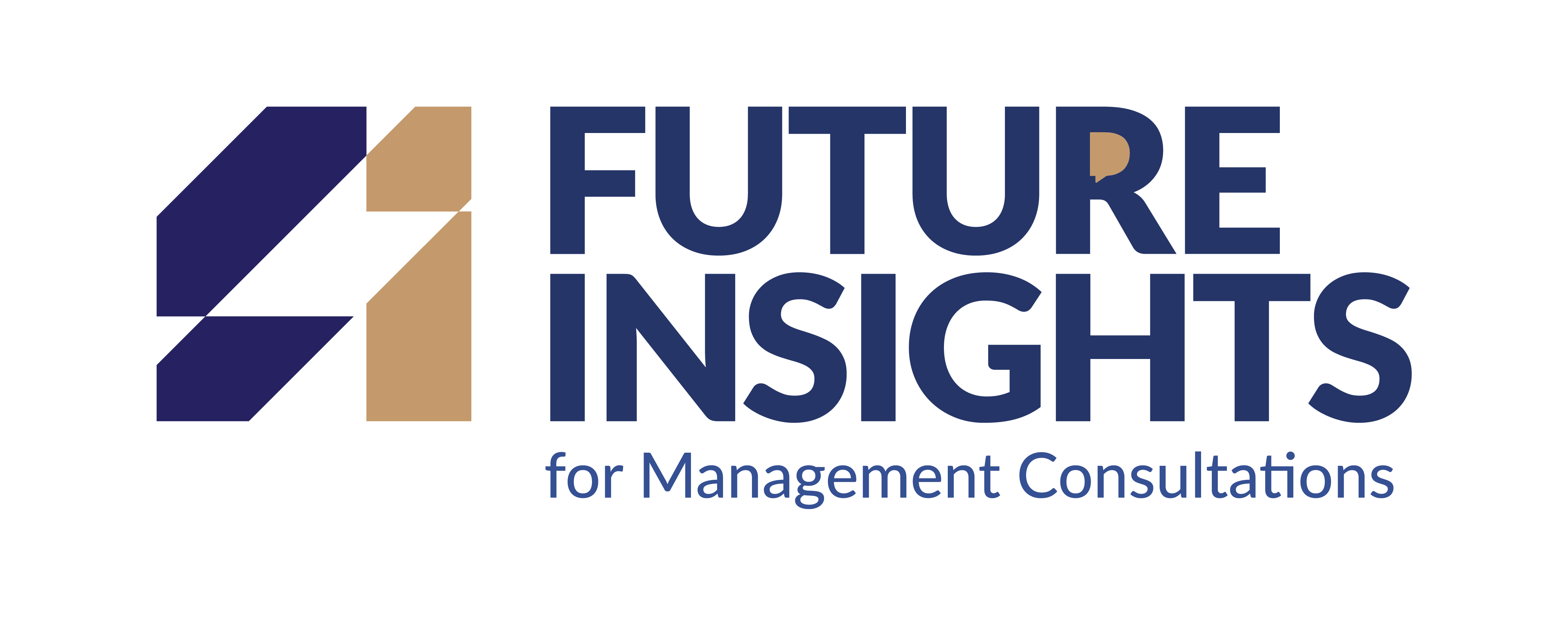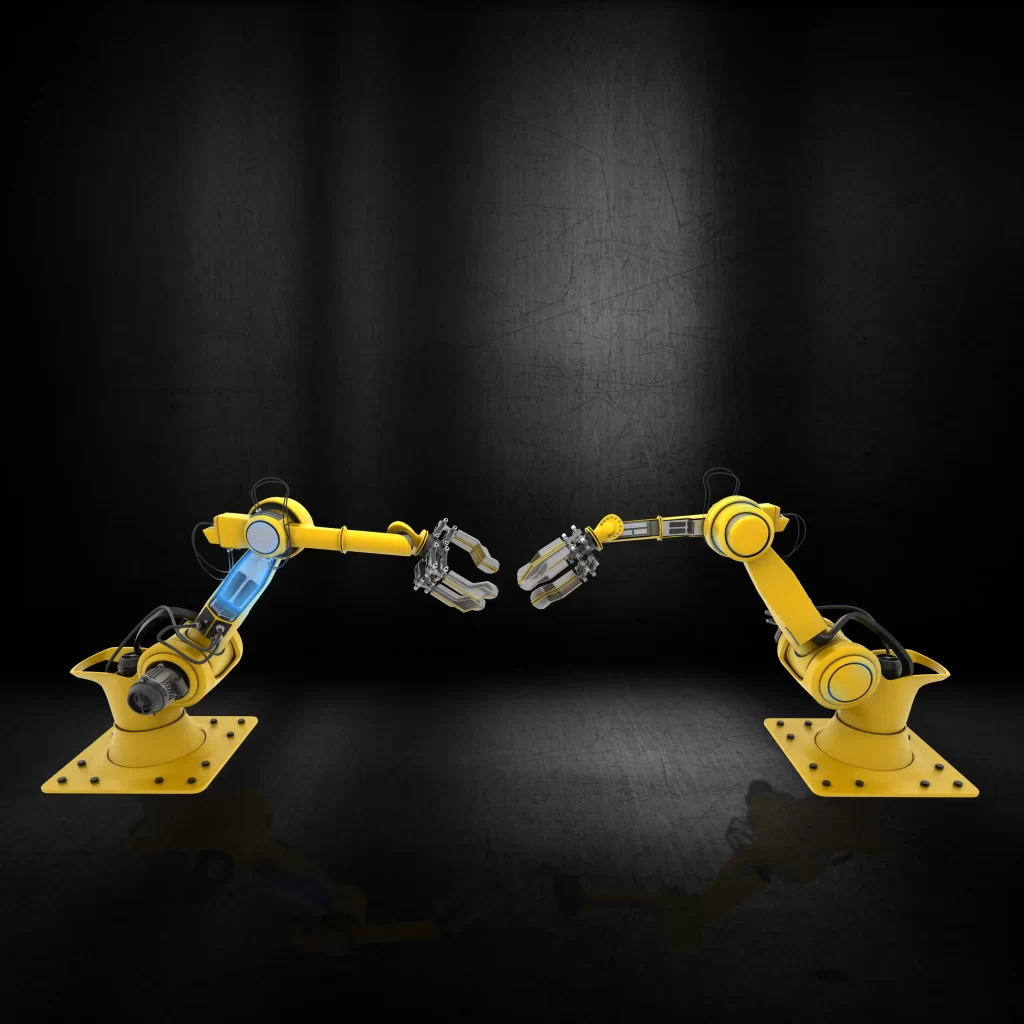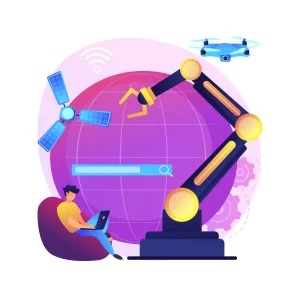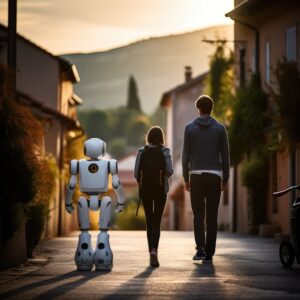1. The Convergence of IoT and Robotics
The Internet of Things (IoT) connects physical devices to the internet, enabling them to collect, share, and act on data. Robotics, on the other hand, introduces physical and mechanical capabilities to interact with and adapt to the world. Together, IoT and robotics create systems that are:
- Autonomous: Capable of performing tasks with minimal human intervention.
- Collaborative: Working seamlessly with humans and other devices.
- Responsive: Acting in real-time based on data and environmental inputs.
Examples of Integration:
- Smart Warehouses: Robots equipped with IoT sensors optimize inventory management and order fulfillment (e.g., Amazon’s robotics systems).
- Healthcare Robots: IoT-connected robots monitor patient health, deliver medications, and assist in surgeries.
2. Transforming Key Sectors
a. Healthcare
IoT and robotics are revolutionizing healthcare by improving diagnostics, treatment, and patient care.
- IoT Sensors: Wearable devices track vital signs and send real-time updates to doctors.
- Robotic Surgeons: Robots like da Vinci Surgical System perform precision surgeries with minimal invasiveness.
b. Manufacturing
- Smart Factories: IoT sensors and robotic arms collaborate to streamline production lines, reduce waste, and ensure quality control.
- Predictive Maintenance: IoT devices monitor machinery performance and predict maintenance needs, minimizing downtime.
c. Agriculture
- Robotic Harvesters: IoT-enabled robots optimize planting, irrigation, and harvesting.
- Smart Farming: Sensors monitor soil health, weather, and crop growth, enabling data-driven decisions.
d. Urban Living
- Smart Cities: IoT networks manage traffic, energy consumption, and public safety, while robots assist in tasks like waste management.
- Service Robots: Autonomous delivery drones and cleaning robots enhance convenience and efficiency in urban environments.
3. Transforming Key Sectors
a. Autonomous Systems
IoT-connected robots can now make decisions based on data without human intervention. For instance:
- Self-Driving Vehicles: IoT sensors enable real-time navigation and communication with infrastructure and other vehicles.
b. Artificial Intelligence Integration
AI enhances IoT and robotics, allowing machines to learn from data and improve their performance over time.
- Example: AI-driven robotic assistants in retail analyze customer behavior to provide personalized recommendations.
c. Edge Computing
Processing data locally rather than sending it to the cloud enables IoT-robotics systems to operate faster and more securely.
4. Challenges in IoT and Robotics Development
a. Security Risks
The interconnected nature of IoT makes it vulnerable to cyberattacks. Ensuring secure communication between devices is crucial.
b. Ethical Concerns
- Job Displacement: As robots take over repetitive tasks, the workforce must adapt to new roles.
- Privacy Issues: IoT devices collect vast amounts of personal data, raising concerns about misuse.
c. Technical Barriers
Developing seamless integration between IoT and robotics requires overcoming challenges in standardization, interoperability, and scalability.
5. The Role of IoT and Robotics in the Next Form of Life
a. Coexistence with Humans
IoT-connected robots will act as companions, collaborators, and caretakers, enhancing human capabilities and improving quality of life.
b. Building Intelligent Ecosystems
IoT-robotics systems will create smart ecosystems, such as homes that anticipate human needs, factories that self-optimize, and cities that adapt to residents’ behaviors.
c. Driving Sustainable Development
From reducing waste in manufacturing to optimizing energy use in cities, IoT and robotics will play a key role in building a sustainable future.
6. The Future Outlook
a. Increasing Ubiquity
IoT and robotics will become integral to everyday life, from managing household chores to revolutionizing how industries operate.
b. Collaboration Between Humans and Machines
Rather than replacing humans, IoT-connected robots will complement human skills, creating a collaborative environment for innovation.
c. A New Definition of Life
As IoT and robotics systems become more autonomous and adaptive, they challenge traditional definitions of life. These systems will act as interconnected entities capable of learning, evolving, and responding to their environments.
Conclusion
IoT and robotics are at the forefront of creating the next form of life, blending technological intelligence with human creativity and needs. As these systems become more integrated into our daily lives, they will redefine how we interact with the world and reshape industries, societies, and the very concept of existence. The challenge lies in harnessing their potential responsibly, ensuring they contribute to a future that benefits humanity as a whole.



